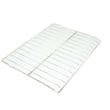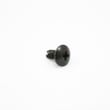- Kenmore refrigerator water filters
- Whirlpool refrigerator water filters
- Samsung refrigerator water filters
- GE refrigerator water filters
- LG refrigerator water filters
- Frigidaire refrigerator water filters
- KitchenAid refrigerator water filters
- Maytag refrigerator water filters
- Kenmore Elite refrigerator water filters
- Estate refrigerator water filters
- GE Profile refrigerator water filters
- Amana refrigerator water filters
- Bosch refrigerator water filters
- Dacor refrigerator water filters
- Electrolux refrigerator water filters
How to tune up a riding lawn mower video


Tune up the engine on your riding lawn mower at least once a year to keep it running efficiently. An engine tune-up includes changing the oil, oil filter, air filter, spark plug and fuel filter—this video walks you through the process so you can keep your engine performing at its best.
For additional repair help, including common symptoms and troubleshooting tips, step-by-step riding lawn mower and tractor repair guides and articles, check out our repair help section. In addition, find the riding mower parts you need to fix your mower.
Hi, Wayne here from Sears PartsDirect. Today we're going to tune up a riding lawn mower. Tuning up your mower engine every year helps your engine last longer and perform better.
Supplies you may need
Drain pan
Strap wrench
Work gloves
The first step is to gather the supplies for the tune-up. You need an oil filter, air filter, fuel filter, motor oil and spark plug—or 2 spark plugs if your engine has 2 cylinders. Many mowers have a sticker under that hood that lists part numbers for these supplies. Of course, you need a drain pan or container to catch the old oil. Use a container with a spout or a cover so you can carry the old oil to a collection facility after the oil change.
Also grab a strap wrench to loosen and tighten the oil filter. If you lost the oil drain tube that came with your mower (like I did), then you need one of those, too. A drain hose also helps you drain the oil directly into the oil pan without making a mess.
How to change the oil
Once you gather the supplies, run the mower for a few minutes in a well-ventilated area. This will warm the oil so it drains easily. Park the mower on a level surface. Set the parking brake and remove the ignition key. Lift the hood and disconnect the spark plug wire (or wires if your engine has more than one cylinder).
Now we're ready to get started with the oil change. To give you a better view, we’ve removed the hood. Remove the fastener from the lower right dash cover. Carefully slide the dash cover up slightly to release the locking tabs and remove the cover. Remove the oil drain valve cap and install the oil drain tube. Put an oil pan under the drain tube to catch the draining oil.
Push in and turn the drain valve counterclockwise to unlock it and then pull the drain valve outward to open. Remove the oil dipstick, taking care to keep debris out of the dipstick opening. Let the engine oil drain until it stops completely. Push the drain valve in and turn clockwise until the pin locks. Remove the oil drain tube and reinstall the drain valve cap. Reinstall the dash cover and secure it with the fastener.
Add new oil to the engine
The final step is to add new oil. Because some oil might remain in the mower after you drain it, you might end up adding less than the amount specified in the owner’s manual. To avoid overfilling, follow these steps.
Pour clean oil through the dipstick tube, stopping several ounces before the full amount specified in the owner’s manual.
Wait a minute for the oil to settle in the engine sump.
To check the oil level, wipe the dipstick with a shop rag and push the dipstick all the way into the dipstick opening and lock it.
Then unlock it and pull it out. If the oil doesn’t reach the top of the full mark on the dipstick, add a little more oil, wait a minute and check again.
Repeat until oil reaches the top of the full mark.
Reinsert the dipstick.
How to change the air filter
Next, we'll change the air filter. This engine uses a foam pre-filter and air filter, so replace both when you tune up the engine. Turn the air filter cover retaining knobs counterclockwise to release and pull off the air filter cover.
Release the air filter from the intake tube and pull out the filter. Slide the new pre-filter over the new air filter and attach to the intake tube. Slide the filter into the housing and reinstall the air filter cover. Turn the retaining knobs clockwise to lock the cover in place.
How to replace the spark plug
Now it's time to replace the spark plug. Use a spark plug wrench to remove the spark plug from the engine cylinder. Using a gap tool, set the gap on the new spark plug to the gap specified in your owner’s manual. For this engine, the gap is .03 inches. Thread the new spark plug into the engine and tighten it with the spark plug wrench. Don’t reconnect the spark plug wire yet.
How to change the fuel filter
The last item we'll replace on this engine is the fuel filter. Use two pinch-off pliers to clamp the fuel line on both sides of the fuel filter. Place a shop rag under the filter to catch fuel. Release the hose clamps and pull the fuel line off each side of the fuel filter. Remove the filter and wipe up any spills.
Connect the fuel line to each side of the new filter using the pliers. Release the hose pinch-off pliers from each side of the fuel filter. Reinstall the lower left dash, and tighten it with the fastener. Reconnect the spark plug wire and lower the mower hood.
Re-check the oil level
Now that we have everything installed, we'll start the engine and re-check the oil level. In a well-ventilated area, we'll run the engine for a few minutes to move the oil through the engine, and then shut it off and check the oil level. Allow a minute for the oil to settle in the engine sump. Lift the mower hood and check the oil level one more time.
Add oil if needed to hit the full mark on the dipstick. Now you can dust off your hands and pat yourself on the back for taking such good care of your engine. The engine will pay you back with years of efficient and dependable service.
I hope this video helped you out today. You can find links to the parts and products we talked about in the video description below. Check out our other videos here on the Sears PartsDirect YouTube channel. Subscribe, and we’ll let you know when we post new videos.
Most common symptoms to help you fix your riding mowers & tractors
Choose a symptom to see related riding mower and lawn tractor repairs.
Main causes: worn or broken blade belt, broken belt idler pulley, blade clutch cable failure, bad PTO switch, damaged ma…
Main causes: faulty battery, bad alternator…
Main causes: punctured tire or inner tube, leaky valve stem, damaged wheel rim…
Main causes: dead battery, stale fuel, bad starter solenoid, ignition system problem, bad ignition interlock switch, clo…
Main causes: damaged tie rods, bent or worn wheel spindle, worn front axle, damaged sector gear assembly…
Main causes: shift lever needs adjustment, neutral control needs adjustment…
Main causes: clogged carburetor, damaged flywheel key, dirty spark plug, stale fuel, improper valve lash, engine needs a…
Main causes: worn or broken ground drive belt, bad seat switch, transaxle freewheel control engaged, transaxle failure, …
Main causes: unlevel mower deck, dull or damaged cutting blades, worn mandrel pulleys, bent mower deck, engine needs tun…
Most common repair guides to help fix your riding mowers & tractors
These step-by-step repair guides will help you safely fix what’s broken on your riding mower or lawn tractor.
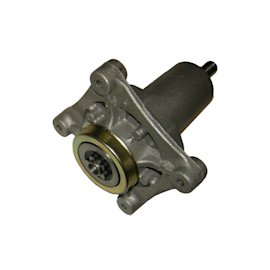
How to replace a mandrel assembly on a riding lawn mower
Replace the mandrel assembly if the blade shaft vibrates or doesn't spin.…
Repair difficulty
Time required
30 minutes or less
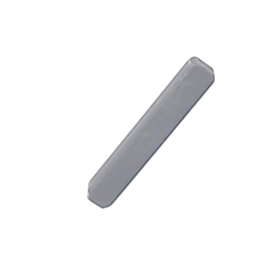
How to replace the flywheel key on a riding lawn mower
If the engine won't restart after hitting a stump or rock, the problem could be a sheared flywheel key. Follow these ste…
Repair difficulty
Time required
60 minutes or less
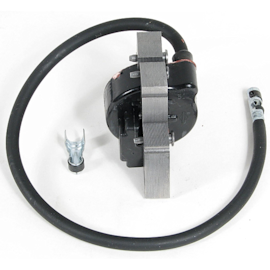
How to replace a riding lawn mower ignition coil
If you're not getting spark from a good spark plug, the problem could be the ignition coil. Follow these step-by-step in…
Repair difficulty
Time required
30 minutes or less
Effective articles & videos to help repair your riding mowers & tractors
Use the advice and tips in these articles and videos to get the most out of your riding mower or lawn tractor.

Do you know a lawn tractor from a garden tractor? Take a look at the key differences and discover how each handles your …

Wondering when to mow your lawn for the best results? Timing matters more than you might think. Discover the best time o…

Learn about all the convenient features on our Sears PartsDirect website that make your parts purchases easier.…
